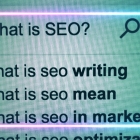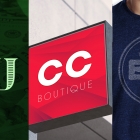To Show Or Not To Show: 7 Things You Should Know Before You Exhibit
Choosing to exhibit at a trade show is a strategic decision. Perhaps now more than ever, the decision "to show, or not to show" is fraught with huge financial risk. Costs for services like labor and freight continue to rise, and travel expenses are becoming an even larger part of the pie.
That said, the trade show arena (the figurative one, not the literal one) offers some unbelievable bargains. The payoff in terms of face-time opportunities with clients and prospects is still one of the most cost-effective and time-efficient ways to connect with your audience.
And the impact of a trade show exhibit on your brand perception and brand equity can be significant. Imagine what the trade magazines would say if Ford didn't exhibit at the International Auto Show in Detroit?
So to help you decide if you should show (or not show), here's the list of things your competitors wish they'd known.
- Know your audience. Before you spend thousands of dollars to attend a show and put on a great display, think about who you want to see. Does your target audience attend trade shows and conferences? If so, which ones? And who will attend the show: a key decision maker who you've been dying to meet in person, or her top-notch assistant who loves to travel and get free goodies? Make sure it'll be money well-spent before you invest $5,000 to rent exhibit space where you don't need to be.
- Communication is key. Assuming you're ready to take the plunge and exhibit, think about what you want to accomplish with your exhibit. Do you want to introduce a new product line to the masses? Provide a quiet refuge where your reps can converse with key prospects away from prying eyes? Encourage people to visit your booth and nest for a while? Tell your design agency what your goals are before they start designing so you don't end up wasting their time and your money.
- You get what you pay for. When it comes to purchasing an exhibit, don't be afraid to invest in quality. With relatively minor maintenance, an exhibit can easily last for 20-30 shows or 5-7 years, whichever comes first. So that extra 10% you pay now could save you huge headaches in the long run.
- Don't be a know-it-all. When you do decide to invest in an exhibit or graphics, be smart about it. Hire a reputable firm who understands what it takes to build an exhibit that makes a good 3D impression and listen to them. They're the experts when it comes to knowing what materials will last and wear well (laminates and fabric) and what materials won't (metal and glass).
- Love me for my body. Don't buy an exhibit from someone just because he's a nice guy. Remember that your salesperson is the face of the company, and will probably not be the one who will actually build the exhibit, so make sure there's a strong, capable body of people behind him who can deliver what he promises. And speaking of bodies, exhibit display companies come in all shapes and sizes, so find one that fits you.
- The fine print. Pay attention to the details of what is, or is not, included in the price you're paying. If you're unsure of what something means, ask. While the trade show industry has its quirks and foibles, it's not brain surgery. So if it doesn't make sense to you, be persistent and make sure you know what you're paying for.
- Going through a growth spurt? If you already have an exhibit and want to book a bigger space at next year's show, you may already be worrying about the additional cost to build a new booth. Fear not: there are smart ways to augment what you already own, so you may be able to have another year or even two to save for the next generation of your exhibit. Talk to your agency about custom rental components, alternate configurations or low-cost large-format graphics; they may be just what you need.
Exhibiting at a trade show can lend credibility to your company, reach a number of key clients and prospects quickly and easily, and be a great investment as you grow your company. Doing some homework beforehand will help ensure that you reap much more than you sow.
Next month, we'll look at ways to make your use of direct mail more... useful.
 An agency-eye view of Marketing, Advertising, Branding, Design & Media.
An agency-eye view of Marketing, Advertising, Branding, Design & Media.




